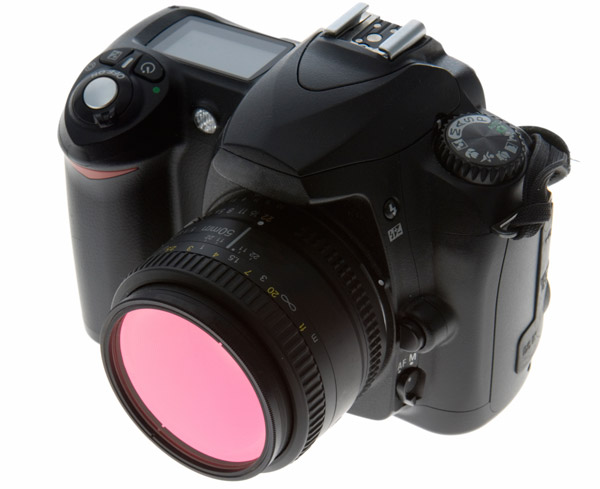Crime-solving camera
Quick-change trick allows a digital camera to photograph blood concealed by paint

A digital camera fitted with the right filters, like the one shown here, can detect only infrared light. The crime-fighting trick can reveal bloodstains hidden behind layers of paint.
bmcent1/iStockphoto
Criminals can’t hide their crimes with paint anymore, thanks to a lighting trick and an ordinary camera.
In July, scientists reported that a standard digital camera can photograph blood even when it’s hidden behind many layers of paint. All it takes are some small adjustments to the camera to turn it into a crime-fighting tool.
In an investigation, blood found at the scene of a crime is powerful evidence. It may contain DNA, which can be used to identify victims and criminals. DNA is the genetic material found inside almost every living cell. Like your fingerprints, your DNA is unique to you.
Glenn Porter, a scientist at the University of Western Sydney in Australia, worked on the new study and is an expert in forensic photography. Forensics uses technology and scientific analysis to uncover information useful in investigating a crime. Porter used to be a photographer for the Australian Federal Police. He told Science News that his team’s new photographic finding might be useful, especially in the investigation of crimes that happened long ago.
“We hope it gives law enforcement the ability to go on hunches,” he said. If investigators get suspicious about a cover-up, they can use an adjusted digital camera to take a photo of the area in question. That might come in handy for past crimes where the evidence trail appears to have gone cold. Most importantly, he notes, investigators can use this technique before gathering more evidence in ways that damage the property, such as scraping off paint or taking out a wall.
To turn a standard digital camera into a crime-fighting tool, investigators need the right filters. A filter attaches to a camera’s lens and limits the light let in. To see behind paint, a camera needs to be outfitted with filters that admit only infrared light.
Light travels as waves. The wavelengths of infrared light are slightly longer than those of red light. (A wavelength is the distance from the top of one wave to the top of the next.) Those longer wavelengths give infrared light the ability to pass through paint, something visible light can’t do. Human eyes can’t see infrared, but cameras can — with the right filters.
Porter and his colleagues installed filters so the camera could detect infrared light, which is blocked in ordinary digital cameras. They put small drops of horse blood mixed with water on a board painted white. After allowing the blood to dry, the scientists painted over it. They tested several different colors and three different kinds of white paint.
Beneath two layers of black paint, the blood was invisible to human eyes. But not to the camera. Porter and his colleagues reported that the blood showed through six layers of black paint when photographed with the camera viewing the infrared light. Six layers of red couldn’t hide the stains from the camera. Purple, orange, blue, yellow and green paint also failed to fool the camera. But two layers of white acrylic paint did manage to conceal the drops from the camera.
The new technique borrows on one that art experts have been using since the 1930s. They photograph paintings in infrared light to hunt for drawings that might be hidden beneath the surface. Drawings made with charcoal show up particularly well because the carbon in charcoal is good at absorbing infrared light.
Power Words
acrylic A common type of fast-drying paint.
infrared light Light that has a wavelength somewhat longer than the red end of the visible light spectrum but that is shorter than microwaves.
forensics The application of scientific methods and techniques to the investigation of crime.
filter A screen, plate or layer of a substance that absorbs light or other radiation or selectively prevents the transmission of some of its components.
lens The light-gathering part of a camera







